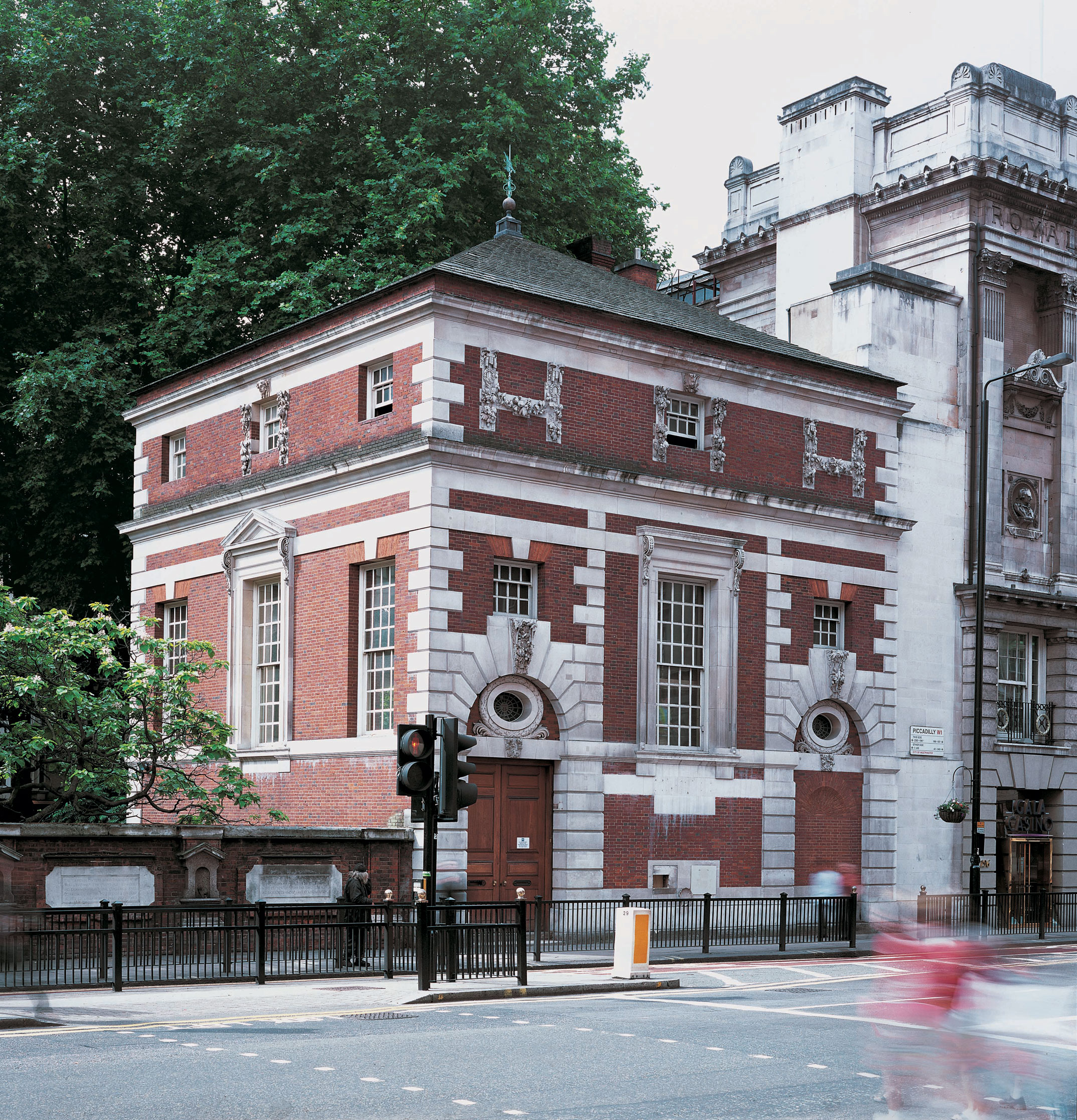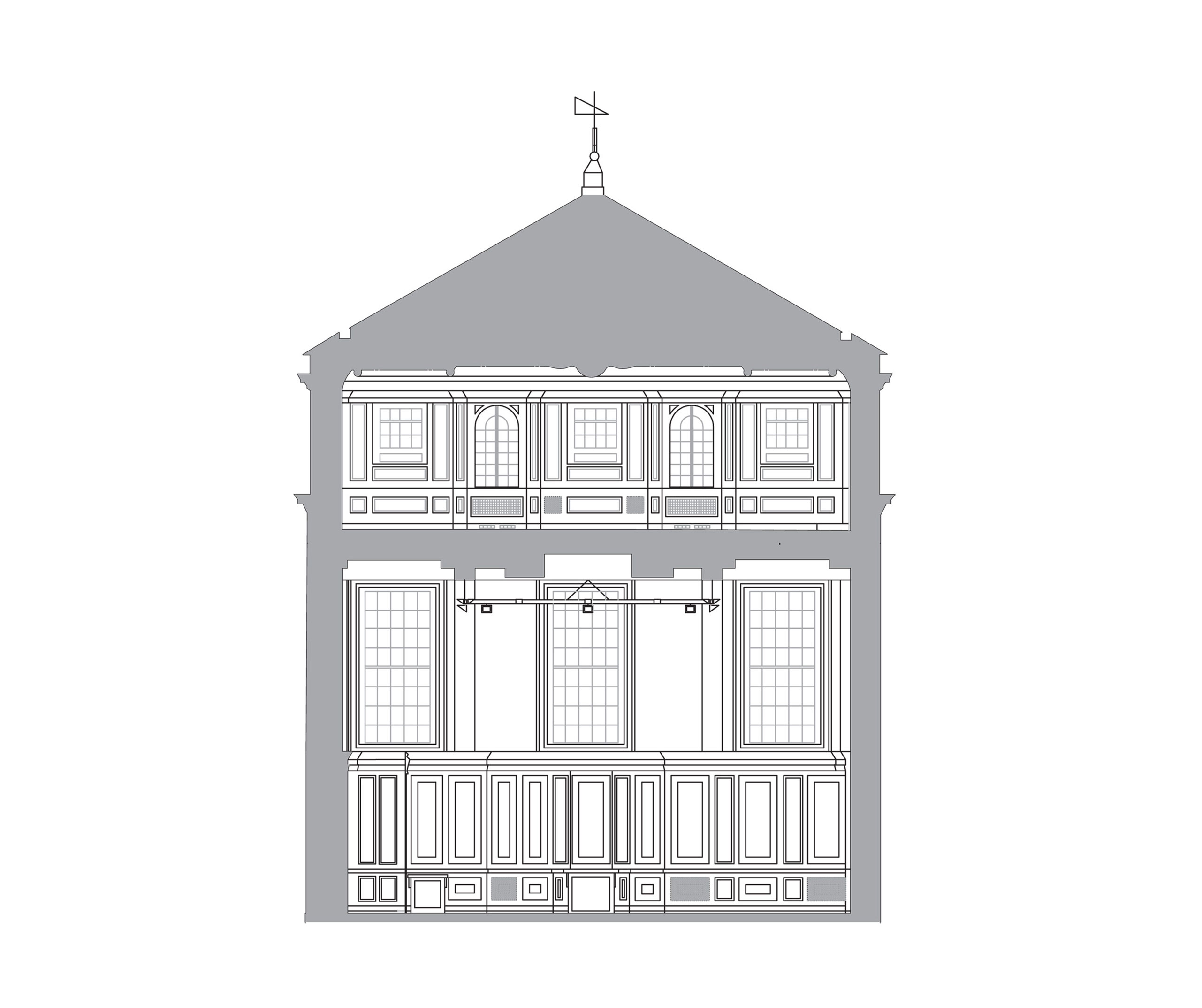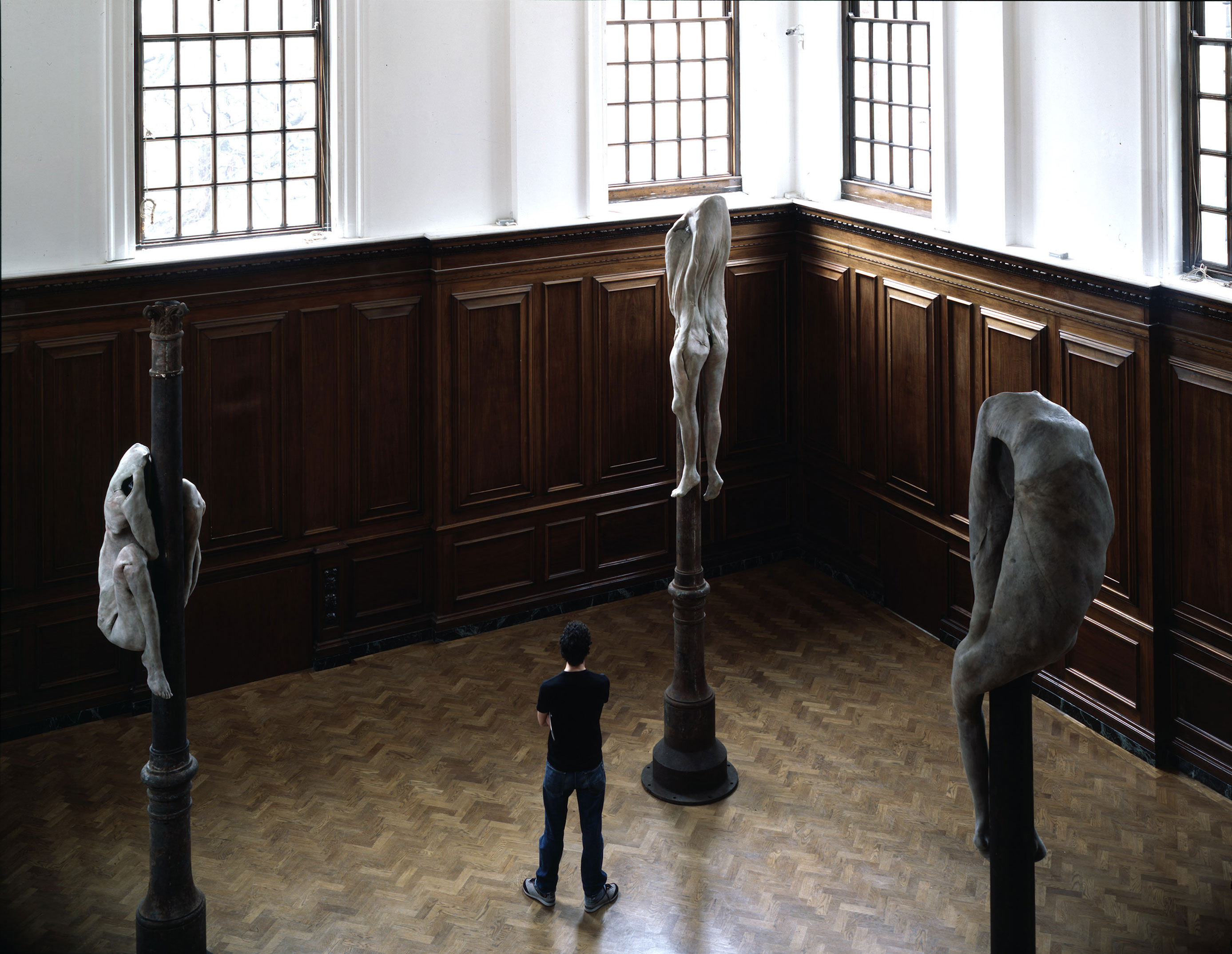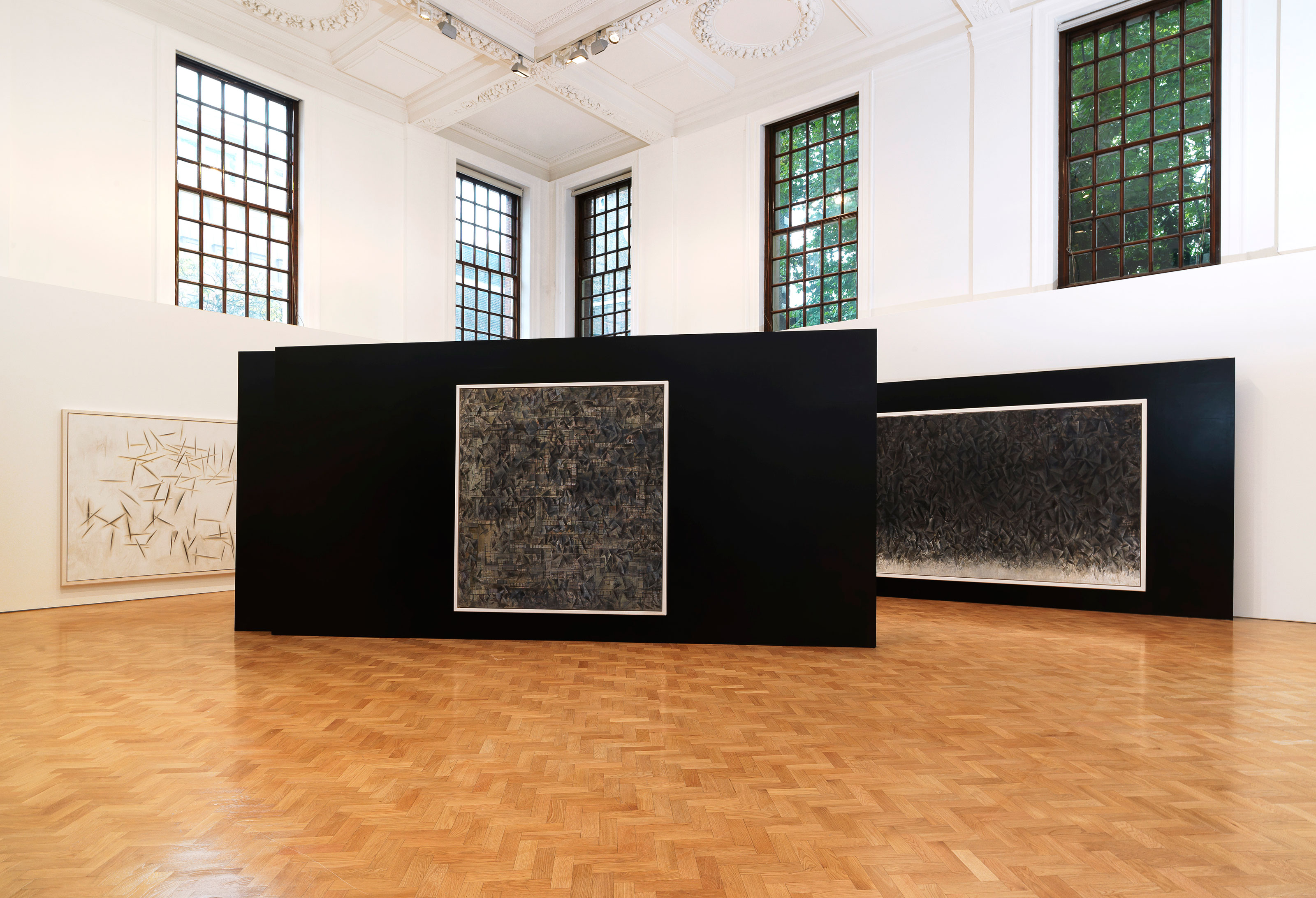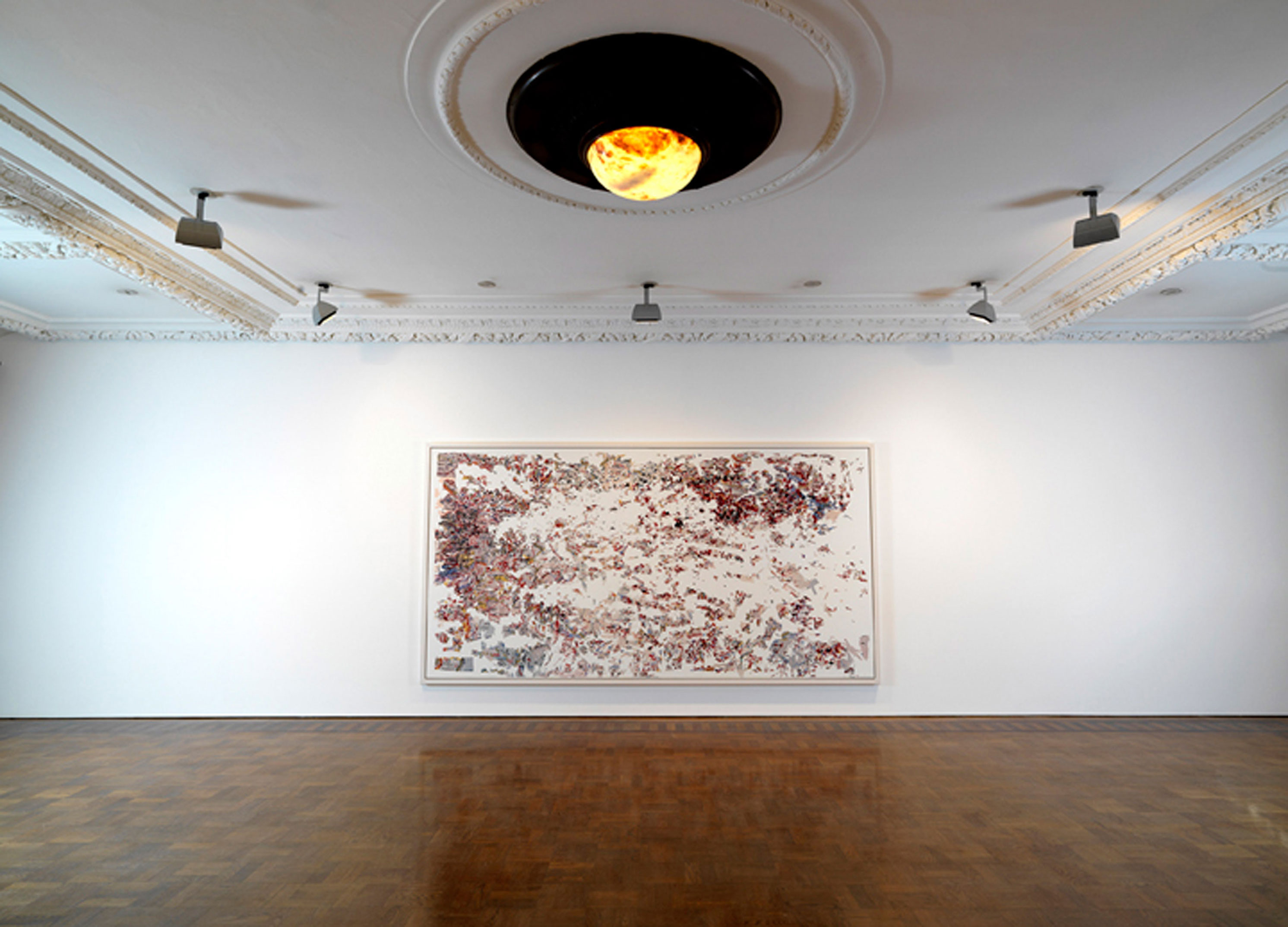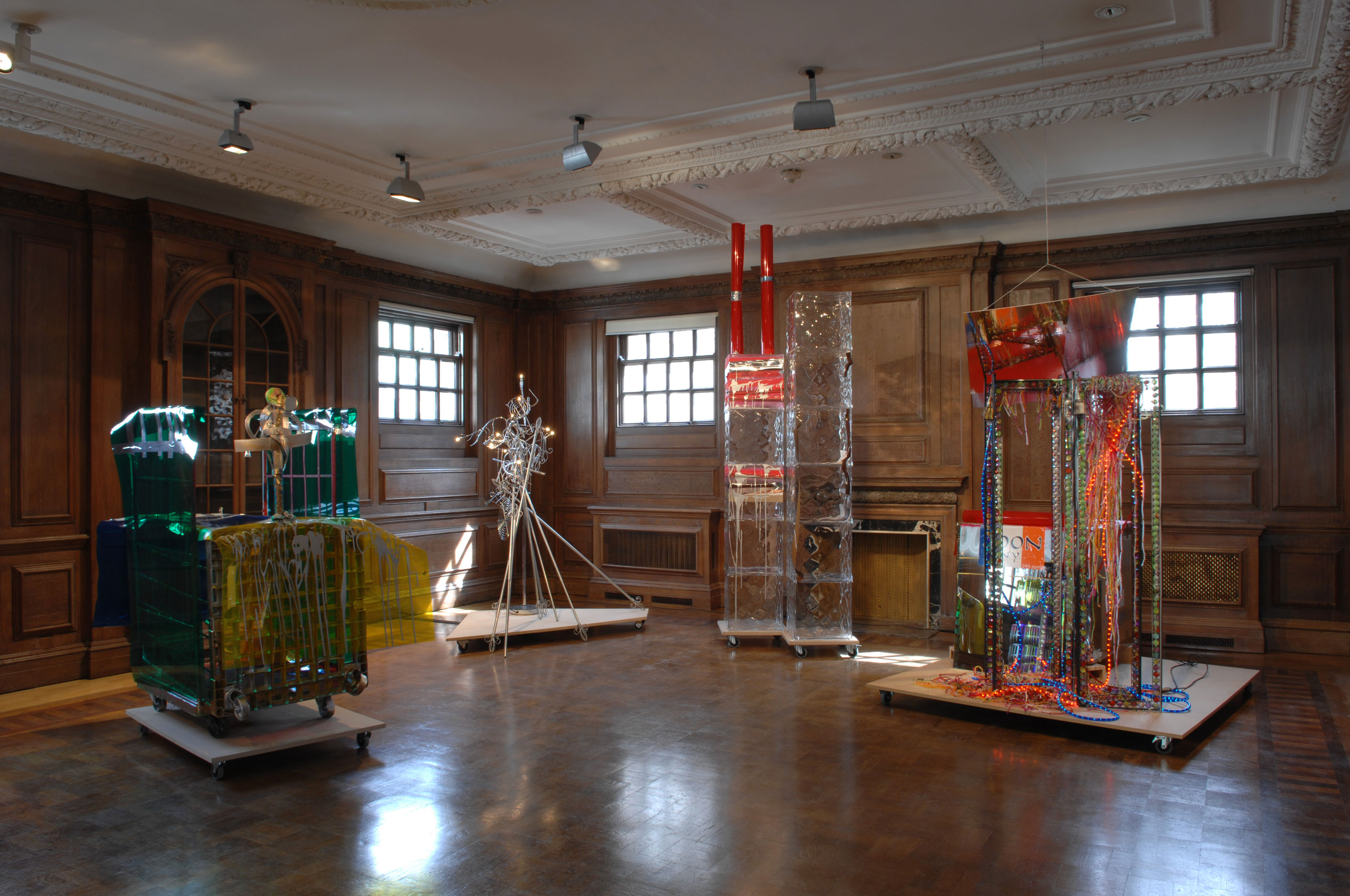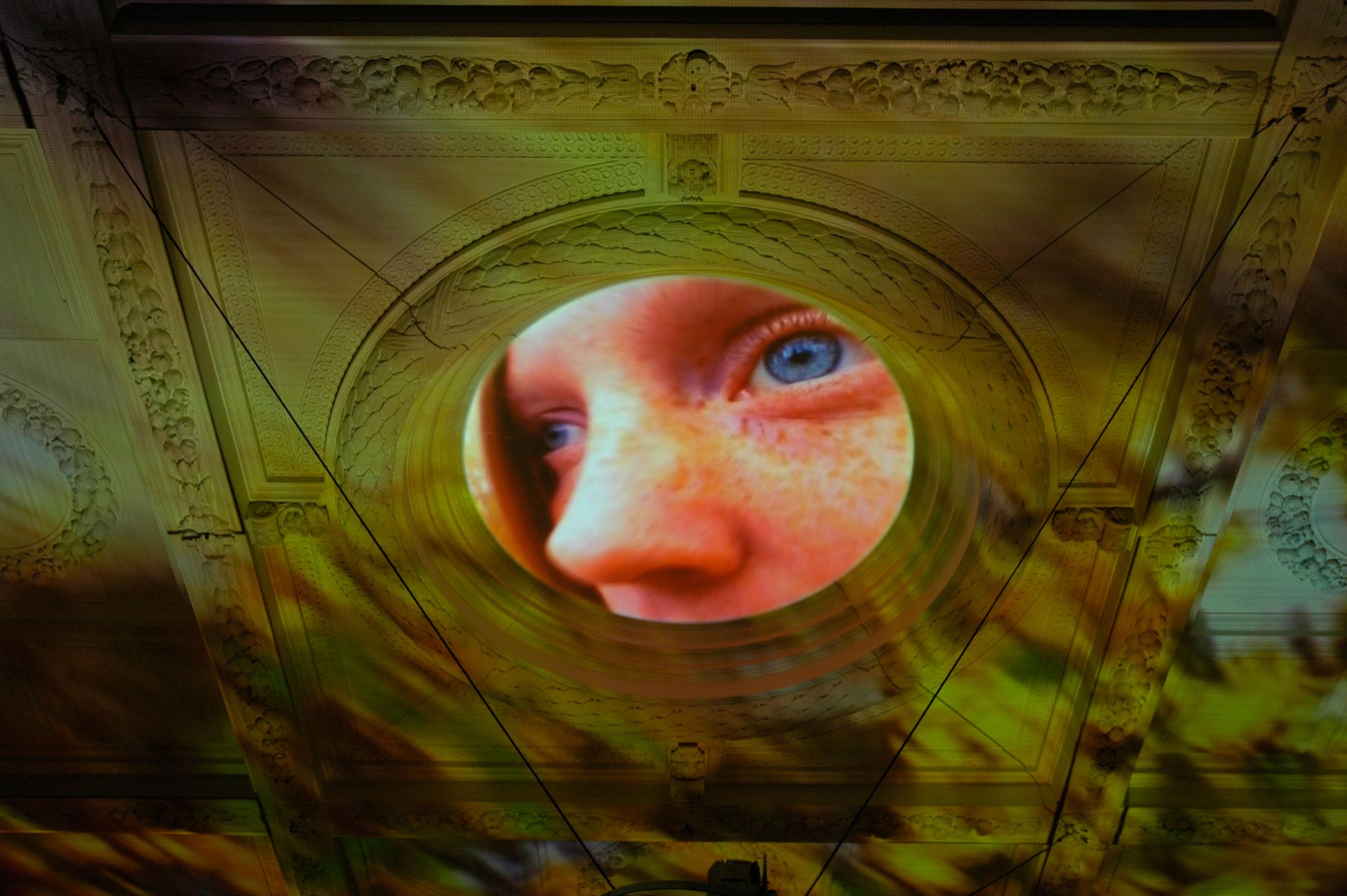Project Info+
Hauser & Wirth
Piccadilly, London – 2004
with Annabelle Selldorf
The interior of the Grade 2* 1922 “Wren-naissance” Bank by Sir Edwin Lutyens had been mutilated by a succession of Bank managers as they integrated new work processes: cellular offices, computers, security measures and fluorescent lighting. Sir Edwin Lutyens had defied modern trends by taking the 17th Century Wren Church as his inspiration for his 1922 building. In 2002 the pioneering Hauser & Wirth Gallery audaciously bucked the trend for white cubes exhibition spaces by choosing the timber panelled bank as their flagship London Contemporary Art Gallery.
In close collaboration with English Heritage Annabelle and I transformed the bank into a ‘hybrid’ of its original design, restoring what was there and subtly integrating modern interventions to provide all the necessary services and structural connections that would facilitate a rotating programme of exhibitions by radical installation artists. With an important building it is sometimes best to get under the skin of the original architect and work as within their mindset. The panelling of the main Banking Hall was restored, adapted to contain services and modified to fill in areas where panelling previously either did not exist or was damaged.
Back to top
Project Info+
Hauser & Wirth
Piccadilly, London – 2004
with Annabelle Selldorf
The interior of the Grade 2* 1922 “Wren-naissance” Bank by Sir Edwin Lutyens had been mutilated by a succession of Bank managers as they integrated new work processes: cellular offices, computers, security measures and fluorescent lighting. Sir Edwin Lutyens had defied modern trends by taking the 17th Century Wren Church as his inspiration for his 1922 building. In 2002 the pioneering Hauser & Wirth Gallery audaciously bucked the trend for white cubes exhibition spaces by choosing the timber panelled bank as their flagship London Contemporary Art Gallery.
In close collaboration with English Heritage Annabelle and I transformed the bank into a ‘hybrid’ of its original design, restoring what was there and subtly integrating modern interventions to provide all the necessary services and structural connections that would facilitate a rotating programme of exhibitions by radical installation artists. With an important building it is sometimes best to get under the skin of the original architect and work as within their mindset. The panelling of the main Banking Hall was restored, adapted to contain services and modified to fill in areas where panelling previously either did not exist or was damaged.
Back to top
